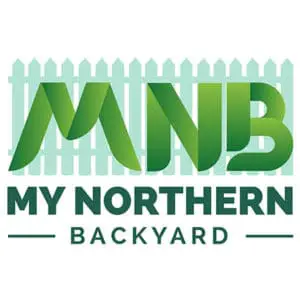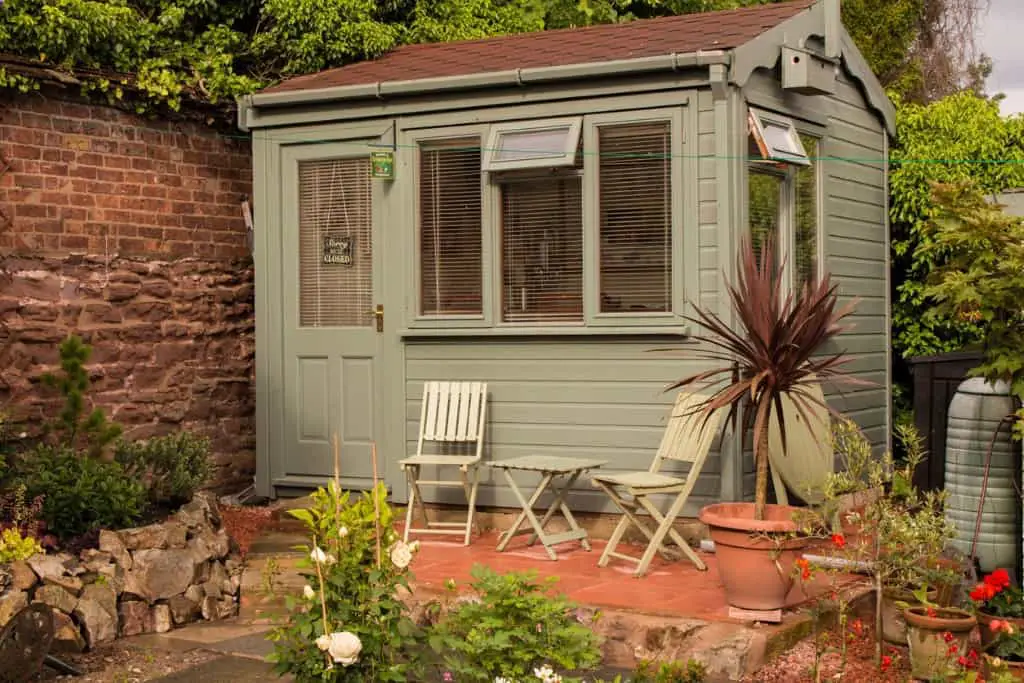
Large or small, there is always a need for storage in your backyard. Traditionally you’d keep chairs or lawn tools, bikes or lawnmowers in your shed to keep them out of the rain and snow. And while your shed could be used for such standard items, what if it could be more. If you have an active social life, what if it could be the hub of your backyard entertainment? Your backyard bar and seating for a rainy day? The place you serve your outdoor parties and dinners from?
You, my friend, need the ultimate outdoor entertainment shed.
Now it will be different from person to person, from situation to situation, but let’s take a look at what you’re going to need for you to plan your ultimate outdoor entertainment shed.
What’s in an Entertainment Shed
Let’s start with looking at what an entertainment shed is, or what it could be. Like a home there are as many variations on an entertainment shed as there are on people. An entertainment shed can vary from a very literal pre-fab shed where you keep your outdoor entertainment equipment (chairs, heater, etc…) to a full separate tiny house/living structure with plumbing, heating and AC, power, lights, and everything you’d need to relax in the backyard in style.
After construction and outfitting, your entertainment shed becomes the center of your backyard entertainment – the source of food and beverage, music and entertainment – the hub of the party.
There’s a lot an entertainment shed can do, and we’re going to cover as much as we can of it. Listed below are some of the things that you’re going to need to think about when planning your shed.
Here’s what we’ll cover:
Planning and Sizing
Building and Permits
Power and Lights
Heating and Cooling
Food Storage and Prep
Adult Beverage Station
Music and Entertainment
Coverage from the Rain and Snow
Seating
Ground Cover and Extensions
Sanitation and Running Water
Entertainment Sheds and Pools
As you can see, before we get to some of the more interesting and exciting parts of building your shed, we’re going to have to go through some less exciting but just as important items.
What Will You Use Your Shed For?
Begin with the end in mind. Whether or not you subscribe to Stephen Covey’s principles for effectiveness, this one makes a lot of sense when planning your entertainment shed. What do you plan to use your shed for? Will it store the good chairs and the drinks table, but not really be used for entertainment? Will it act as a bar and outside kitchen to manage the food and drink, and maybe music? Will it be an upscale building that you’d find on a luxury resort that will have plumbing, running water, a seating area, massage table, full working prep kitchen and a nanny suite upstairs? That last one might be a little rare, but you get my point here.
What you need to do in order to plan your entertainment shed and the scope of work, cost, and time required to complete it will all depend on what you plan to use it for. Your decisions now don’t have to be perfect – they just need to be a general guide. As you get into the planning process and find out that some of the things that you thought you wanted aren’t allowed, achievable, or don’t make sense, and you’ll be able to change direction while you’re planning. So spend some time figuring out where your target is going to start, and you can adjust on the way.
Planning and Sizing
To be successful with any kind of large project, first you need a plan. How detailed or sparse, how complete or incomplete is really up to you – but the more details that you have in place before you begin means shorter times in completing your project and better chance that you actually get what you want out of all the effort that you put in.
There are really two ways to plan the build of your entertainment shed. You can be meticulous and lay out every dimension, requirement, content and expectation and then plan each section out to give you an efficient build, or you can run through iterations. If you’re going to use iterations – plan and build part of the master plan then examine what you’ve got and plan and build the next stage – you can run the risk of not building enough in an earlier stage and having to go back and redo some work.
If you already have a shed you plan to use as an entertainment shed, you should still go through a planing process but you can skip the first couple of parts around sizing and zoning and permits and skip right to the utilities, amenities, and decorations.
If you don’t already have a shed or want to build a new one you will first need to know what you have to work with. If you don’t already know them, go out and take measurements of your backyard. Sketch out your yard on a piece of paper or on the computer (in Excel, a CAD program, SketchUp, whatever works for you) so that you can get a good visual representation of what your yard looks like. Try to make the sketch proportional so that it comes close to the ratios in your yard (you don’t need an exact scale drawing, but the ratios are important) Add any salient features (like trees, or bushes, gardens, fences, a deck or patio, a pool, or any other structures that you already have in your yard. If there is a large feature that is movable (like a trampoline) you should include it, but also be aware that you might be able to move it in your new yard design.
Now that you’ve got a sketch of your yard you can start considering how big a shed you’re going to want. Remember that you’ve scaled down your drawing you might need to do some math in order to get it back to the right size – but to make it easier on yourself you might want to go back out to the yard and use object to mark out the corners of your shed. Once you’ve got a size that you like go back in and mark it on your plan with the measurements.
You’re off to a great start! Now you know where you want your shed and how big you want to make it – but don’t cast it in stone until you’ve gone through the next steps. Now note – as you work through all the different details in planning the shed you may come back to any part and make changes – that’s ok! That’s one reason it’s good to think your way through the entire process before you commit to anything.
Building and Permits
Ah, building permits. It’s a pretty small portion of the population that hears those words and gets excited – but it’s something that you’re going to have to deal with if you want to build your shed. Most locations have rules around how big a shed you can build without a permit (typically 107-120 sqft – or about 10 sqm) that are less than a certain height (which varies wildly between locations.) However, and I can’t stress this enough, before you start make sure you check with your planning office or city clerk. The absolute worst thing that can happen to you and your build is that you decide to start a build, buy the materials, invest your time or money in starting the build, and then get told that you need to tear it all down because you’ve ignored the proper permits. I know that sometimes people get away with not getting permits but this structure will be outside – visible to at least your neighbors and potentially to anyone who drives by. Find out if you need one, and modify your plans or get the permit to fit inside the rules.
Some locations will have other requirements around if you need a permit no matter what the size of your shed will be. If you plan to have other amenities such as power, plumbing, septic or sewer, you may need to get multiple permits for the install. If you plan to make sleeping accomodations in the shed you will almost definitely need a building permit and inspection after.
One other thing to consider is if you have a Home Owners Association and what the rules and regulations are for your particular HOA.
It’s going to be your shed – proceed how you’d like – but you would do yourself a favor by visiting or calling the planning office and playing by the rules.
Power and Lights
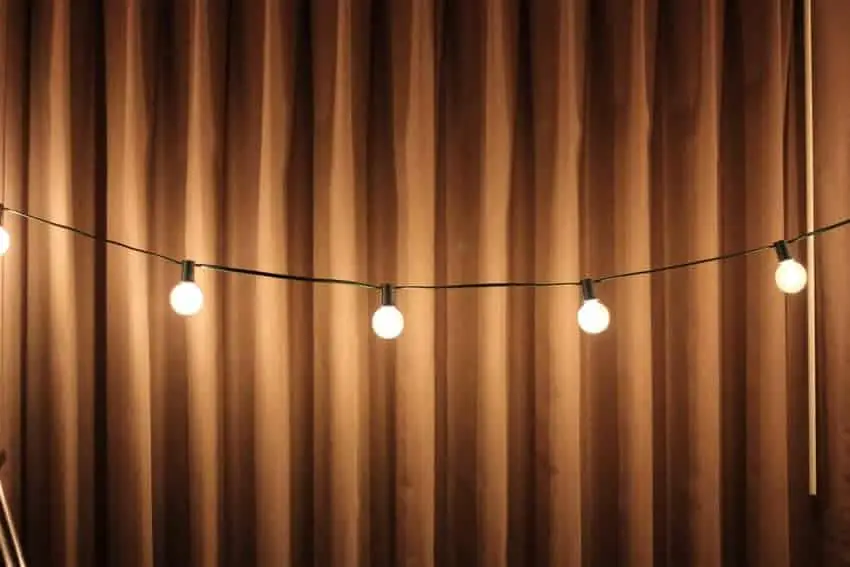
If you’ve decided that your shed will need power inside (to run a refrigerator, lights, TV, sound, whatever you need it for) or outside (flood lights, fans, etc…) you’ll have to answer two questions:
- How much power do I need?
- Where am I going to get it from?
Let’s start with the second question first. When considering power there are really four ways to get power to your shed – some more temporary and some more permanent.
- Run an extension cord – when you’re going to use your shed, run an extension cord from your house to power the devices in the shed
- Get a battery bank – if your power needs aren’t overwhelming (say some music, a light, and a powered cooler) you could consider charging a battery bank like this one at Amazon in your home, then carrying it out to the shed for the entertainment
- Set up off the grid renewable energy such as solar or wind. You can find a solar kit here at Amazon but you’ll still have to add a battery and inverter (a good video here for understanding how they go together, but you may want to speak to an electrician about the wiring)
- Dig a trench and run permanent power from your home. This is likely the priciest solution but will guarantee that you don’t run out of power (unless you’re facing a blackout!)
If you’re using an extension cord or digging a trench to run permanent power to your shed, you’re not going need to determine how much power you need – if you’re only using standard plugs it will be available to you. If you’re going off-grid or using a battery, it might be helpful to know how much power you expect to use in order to determine if your system will be large enough.
To figure out how much power you need you’ll have to figure out how much energy your chosen devices will take. On each device there should be a sticker indicating how much energy the device draws in kilowatt hours (kWh). You can also check out this link to estimate power draw of common appliances. This video is a good example of figuring out how much battery power you need (either via a bank or charged via solar or wind) to run the appliances you want in your shed. When you have this calculated you know your power budget for entertainment. Keep that in mind as you may need to revise it (and this may change your plans) as we move through the next steps in planning.
If you’re iterating through your build you can start with a minimal setup (for instance, one solar panel, a charge controller, battery and inverter) and grow your system as your needs and experience increase.
Heating and Cooling
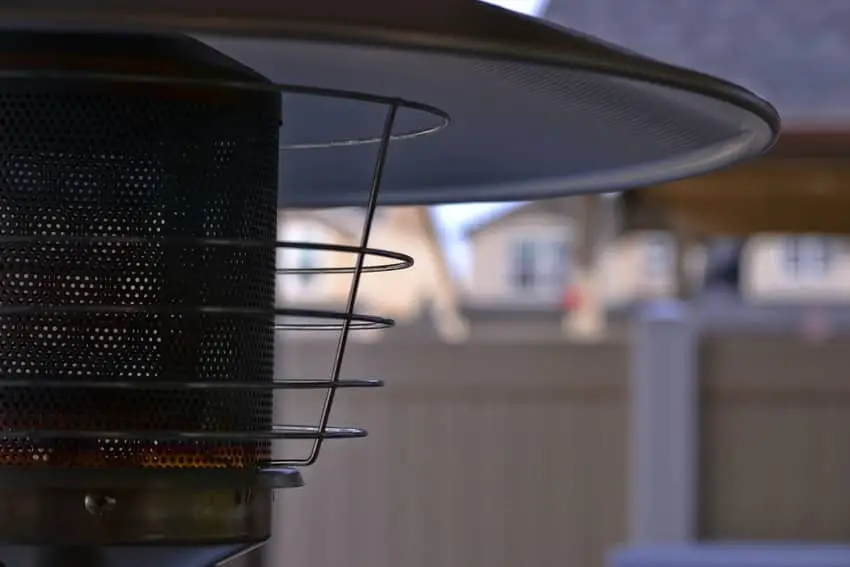
Your shed will be an attraction during the summer, but with some planning you can extend the usable season of your entertainment shed. Heating or cooling inside the shed will always be more efficient with some insulation if you can manage it, but if you’re not sleeping out there you can likely get by without. You’re going to need power for all the cooling options, but you can get away without it for some of the heating.
Let’s consider summer cooling first. If your shed is more storage size and less grand backyard palace, you may not be able to get much cooling inside and out. If your shed is more opulent you’ve got more options to consider
- Can you place a standing or box fan anywhere and get power to it?
- Is there anywhere to install a ceiling fan, either inside or under an overhang outside?
- If there is a window or you can cut a small hole (and you have power) can you install a window air conditioner?
- Is your backyard palace large enough to handle central HVAC?
To extend your shed through the spring and fall, especially the chilly nights we’ve got to consider heating inside the shed and heating outside it.
Outside the shed you’ve got the option of a fire pit (wood if it’s allowed in your area, gas if it’s not), a patio heater (using propane or electric – examples at Amazon), or an outdoor fireplace (again wood or gas).
Inside you shed you’ll have many of the same options as inside your house – the size and cost will again depend on the size of your shed. If you’re going to use gas indoors, make sure you’ve got all the proper safety precautions in place.
- Space heaters
- Indoor fireplace
- HVAC
- Overhead electric heating elements (example at Amazon – this is an option for outdoor as well, if you have the place to mount it.)
Food Storage and Prep
How are you going to handle food when you’re entertaining in your backyard? If the shed is small and not too frequently used, you can get away with little more than a camping cooler with fresh ice when your guests come over. My in-laws had a shed with power where they kept a refrigerator to store food and drink while we enjoyed a swim before eating on the patio. If you plan to have a more climate controlled controlled environment in your shed (like a little house) can you install a stove or stovetop (or smaller cooking appliances like a toaster oven, microwave, or cooking element). If bugs or other critters can get into your shed, be mindful that the crooks and crannies of appliances may provide them excellent places to hide or nest if you’re not there often – say, over winter. You can also park your BBQ just outside the shed to use as the cooking station, or create an entire outdoor kitchen.
Food prep also requires a place that you will be able to keep clean, whether it’s for actual cooking or only laying out the food that you’re serving. This can be a built-in shelf (made from counter-top or simple lumber or plywood if you’re going to cover it before server) or a table (standard or folded away when not in use). Do you want to store utensils and prep tools (knives, peelers, etc…) in your shed? You’ll need anything from a drawer in your cabinets to a plastic tub with a sealable lid.
Do you have water available in the shed for cleaning/prepping/boiling if required? If not, a couple of jugs of water carried from inside can supply what you need, or a beverage cooler to keep water cold while you prep and serve.
The good news is that large or small, fancy or not, your entertainment shed can work as a place to store and prep food. When you’re planning the shed look at your budget and your vision, consider the size of your entertainment shed, how often you’re going to use the installed appliances, whether you have power and water, and how you see yourself in your future gatherings. But before you finalize your plans for food storage and prep, consider the next section.
Adult Beverage Station

Your adult beverage station and your food storage a prep will go hand in hand in that the same needs apply to both. Enjoy cold frosted barley pops? you’ll need something to keep them cold in – and the solution will be the same. Have power? Do you want to keep a refrigerator or freezer in the shed (even a bar fridge?) If not, will a cooler of ice be sufficient for what you need? Do you have enough space for storage of your mixers, and is there a place you can keep ice frozen? You may be making trips inside if you can’t.
Getting past storage – do you need to prepare your drinks? Margaritas don’t blend without power, but if you decided on an extension cord a few sections ago you’ve got that – what about a place to keep the machine while you’re mixing? Pouring wine? Keeping empties. You can break down the adult beverage station into a few components
- Storage
- Chill
- Prep Space
- Serving
- Garbage
- Empties
Things get more complicated if you’re going all out and keeping a keg with taps or a full bar in the shed – and that’s likely something for another article. If you are interested in that there’s a little more research and planning to do.
Music and Entertainment
What’s a backyard party without a little entertainment? Music and potentially video are key to making the party more enjoyable and adding the right background ambiance to your set.
Consider what you want to get from the music. A good quality rechargeable battery powered bluetooth speaker might be enough to get you the volume and music you need at a pretty reasonable price. If you’ve run electricity to the shed, you can take it a step up with a smart speaker like this one from Sonos, or even go with a full stereo system install with mounted or in-wall speakers. The more space you have the more volume you can handle without upsetting neighbors.
What about video? Do you have the space and power for a TV or a project inside the shed or against a wall? Do you want to be able to kick back and watch the game, or have a movie on in the background while friends are over? Do you need the kids entertained with moving pictures while the adults get a chance to unwind together? Adding video to your environment adds flexibility. If you don’t want to splurge for an expensive weatherproof TV, make sure that you’re able to either move the device inside, hinge it up to protect it from the weather, or at least get a cover to give it a little protection. A standard TV left at the mercy of the elements will quickly degenerate into nothing but junk.
Interested in comparing TV to projectors outside? Check out our guide here.
Coverage from the Rain and Snow
We live in a temperate climate – an you may too if you’re looking at blog like this! From where we are near the great lakes we get all four seasons (and sometimes all four in one day.
When planning your Entertainment shed, consider the fact that you too may have to deal with water in some form falling from the sky during your event. Whether it’s rain or snow, it pays to have a plan in place on how you’re going to deal with it.
Dealing with rain can be as simple as planning to have a patio umbrella ready (or already placed, since it’s good for shading from the sun as well) that you and your guests can park themselves under if the rain comes down, but it can also include building an extended roof onto your shed or making sure there is enough space in the shed for guests to congregate while the rain passes (or to enjoy themselves while it’s raining!)
Snow can be both easier and harder to deal with than rain. Before you go any further, think about if you even need to consider snow. Will your shed be used all seasons? If not, skip right down to the next heading!
If you are going to entertain in the winter, a light snow might not need any type of coverage and might be rather enjoyable for your family and guests. What’s important to consider is how you’re going to manage a heavier storm and continue the enjoyment of the outdoors. How you’re heating your shed and your guests (above) will come into play, but you’ll probably need a permanent shelter of some kinds that guests can fit into or under.
Seating
Seating can be inside or outside, eating or lounging, cushioned or not, or even built in. What matters with seating is deciding on the aesthetics that you want it to be, and how convenient you want it to be. For instance, if you have cushions on your seating it may look amazing, but you’re also going to have to either run out and put them away or cover them up whenever it’s going to rain or continuously be taking them in and out of the shed – if you don’t, they’re going to be wet at some times when you want to sit on them. Of course, if they’re under cover it might not be something you need to worry about.
Consider your personal tendencies and how they are going to fit into the ongoing maintenance of your entertainment shed (I’m a low maintenance kind of guy, for instance.)
Also consider what kind of environment you want to create with your shed, potentially inside and out. Is it a casual lounging space? More formal dinner seating? Can kids sit and play on the seating? Do you want to build something in that includes storage?
Ground Cover
Your shed can be just a shed, or it can be a glorious beacon of entertainment on the end of an outdoor living space. The my personal favorite entertainment sheds aren’t simply stand-alone structures, but are rather tied into the other living spaces in the yard – and that includes what’s covering the ground.
If you have a nice patio or deck, consider placing the shed on the patio or deck, or immediately adjacent to it. If the patio or deck runs close to the edge of the yard, that will probably be the perfect place to have the shed – especially if you can use the ground cover to extend the reach of the shed in good weather.
If you’re in a situation where you don’t have a big deck or patio, consider what you can create immediately outside your shed to delineate it from the rest of the yard – creating an entertainment zone. If you plan to keep grass around the shed, is there a decoration or something that can be pushed into the ground that could make it feel like a single space?
Sanitation and Running Water
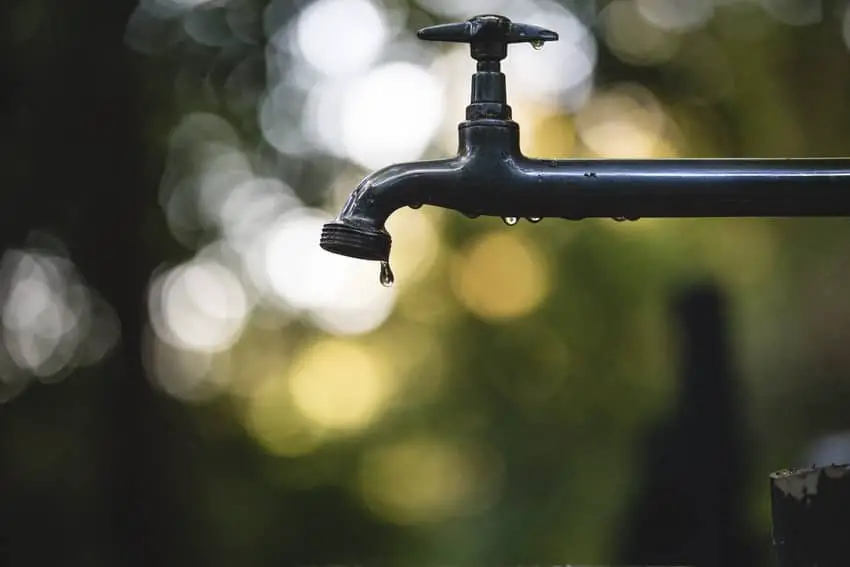
Running water is a luxury that can bring your entertainment shed to the next level. Running water in the shed would be extremely useful for:
- Drink creation, or just drinking
- Ice making
- Hand washing
- Food washing
- Cleaning up dishes and surfaces
- Spraying down ground cover and furniture
- And potentially, a washroom
When you’re considering running water, make sure that what you’re using to get running water out to your shed is food and human safe (you probably don’t want to use a regular garden hose) and free flowing. If you are on well water you can probably supply both buildings from the single well, but consult a plumber on that one.
Getting water to a shed is not a massive undertaking (and not really small either) – a trench, a plumber, and the proper inspections and you’re up and running (remember to call before you dig). What you’ll want to focus on is if it makes sense and is worth it. If all you need is an occasional source of water, consider setting up an easy gravity system by getting a large water jug that you can refill at the house or even a water cooler that you can get disposable jugs for
An outdoor washroom in your shed is an outdoor luxury – especially if you don’t want people coming into the house during a party. Your biggest problem will be how to dispose of the waste. If you can’t tie into your sewage system or your tile field, consider a compostable waterless toilet. If you are considering a washroom make sure you check with local building codes – it may take you from a shed to a separate dwelling!
What About a Pool
If you have a pool, the ultimate entertainment shed expands considerably. Your shed becomes cabana, pool bar, changeroom, pool storage, housing for the pump and heater, and potentially a washroom depending on your previous choices. Consider if you want to integrate the entertainment shed with the pool area in your backyard, or if you might want to put it into a different “zone” – separating pool and party if you have the space.
Detailing the amazing things you can do with your entertainment shed and your pool will take at least another article – and we haven’t written that one yet! Until we do – check out this link for some amazing pool house examples.
Putting It All Together, Costing, and Next Steps
We think the best way to start planning is, well, with a plan! We’ve put together a spreadsheet with the categories above and made it available here for download. Do whatever you like with this spreadsheet – add rows and entries, delete things, don’t use it at all! We’re only trying to clarify how you’re going to go about it, and there isn’t a right or wrong way for your backyard – it’s yours!
When you’ve got the spreadsheet completed you can use it as a tool to work by yourself or with a contractor (or contractors) to start building your shed. Good luck!
